
1
PL INSTRUKCJA ORYGINALNA (OBSŁUGI) ............................................ 2
EN TRANSLATION (USER) MANUAL ..................................................... 3
RU РУКОВОДСТВО ПО ПЕРЕВОДУ (ПОЛЬЗОВАТЕЛЯ) ....................... 5
HU FORDÍTÁSI (FELHASZNÁLÓI) ÚTMUTATÓ ...................................... 7
RO MANUAL DE TRADUCERE (UTILIZATOR) ........................................ 8
SK PRÍRUČKA NA PREKLAD (POUŽÍVATEĽ) ........................................ 10

2
PL
INSTRUKCJA ORYGINALNA (OBSŁUGI)
PODNOŚNIK HYDRAULICZNY 11-730
UWAGA: PRZED PRZYSTĄPIENIEM DO UŻYTKOWANIA
NARZĘDZIA NALEŻY UWAŻNIE PRZECZYTAĆ NINIEJSZĄ
INSTRUKCJĘ I ZACHOWAĆ JĄ DO DALSZEGO
WYKORZYSTANIA.
Instrukcja stanowi zbiór niezbędnych informacji, ostrzeżeń,
wskazówek, opisów działania i zasad konserwacji i obsługi. Zaleca się
przechowywać instrukcję łącznie z gwarancją i fakturą lub rachunkiem
uzyskanym przy zakupie.
UWAGA: Podnośnik służy do pracy wewnątrz pomieszczeń.
„Produkt może się nieznacznie różnić w odniesieniu do zdjęć i opisów
zawartych w instrukcji”.
Mimo zastosowania konstrukcji bezpiecznej z samego założenia,
stosowania środków zabezpieczających i dodatkowych środków
ochronnych, zawsze istnieje ryzyko szczątkowe doznania urazów
podczas pracy.
• Czas życia podnośnika to 10 000 operacji. Nie należy używać
podnośnika po czasie życia określonym przez producenta.
• Podnośnik nie jest przeznaczony do podnoszenia osób, takie
działania są zabronione.
• W czasie korzystania z podnośnika użytkownik jest zobowiązany do
obserwowania urządzenia oraz ładunku w czasie podnoszenia.
• W czasie napełniania lub uzupełniania układu hydraulicznego, należy
bezwzględnie stosować płyn zalecany przez producenta
• W czasie eksploatacji urządzenia należy zwracać uwagę na
wszystkie oznaczenia znajdujące się na podnośniku. Należy zadbać,
aby zawsze były widoczne oraz czytelne.
• Do podnośników zalecamy używać oleju hydraulicznego HVI 13
• Narzędzia nie należy używać w atmosferze wybuchowej.
• Istnieje niebezpieczeństwo doznania obrażeń w przypadku
trzymania rąk w pobliżu punktu podparcia podnośnika, szczególnie
przy podnoszeniu i opuszczaniu ciężaru.
• Nie zbliżać rąk podczas pracy w pobliże podpory.
• Istnieje zagrożenie osób przez niekontrolowany opad podniesionej
masy w przypadku uszkodzenia podnośnika. Podnośnika można
używać jedynie na płaskiej i twardej powierzchni zorientowanej w
poziomie.
• Upewnić się, czy podnośnik jest pewnie ustawiony.
• Upewnić się, że masa podnoszona jest mniejsza od maksymalnego
udźwigu podnośnika
• Na miejscu pracy należy utrzymywać porządek i zapewnić dobre
oświetlenie. Nieporządek i złe oświetlenie przyczyniają się do
wypadków.
• Zwracać uwagę na warunki panujące w miejscu pracy. Nie wolno
wystawiać podnośnika na działanie wilgoci.
• Należy zabezpieczyć miejsce pracy przed osobami postronnymi a
szczególności dziećmi. Należy zwrócić uwagę i nie dopuszczać dzieci
ani osób postronnych do miejsca pracy.
• W czasie pracy podnośnikiem należy być skoncentrowanym,
rozproszenie uwagi może spowodować utratę kontroli nad
podnośnikiem.
• Nieużywany podnośnik należy przechowywać poza zasięgiem
dzieci.
• Nie należy udostępniać podnośnika osobom niezaznajomionym z
nim lub które nie przeczytały niniejszej instrukcji obsługi, podnośnik
może być niebezpieczny w rękach nieprzeszkolonych użytkowników.
• Nie wolno stosować podnośnika do celów, dla których nie jest on
przeznaczony.
• Należy stosować środki ochrony osobistej, okulary ochronne i
rękawice ochronne. Używanie osobistych środków ochronnych takich
jak: obuwie antypoślizgowe, kask ochronny, środki ochrony słuchu (w
zależności od rodzaju zastosowanego narzędzia) – zmniejsza ryzyko
obrażeń.
• Należy cały czas utrzymywać pewną postawę, zachowując
równowagę. Umożliwi to lepszą kontrolę nad podnośnikiem w
nieprzewidzianych sytuacjach.
• Regularnie kontrolować stan oleju hydraulicznego i w razie potrzeby
uzupełnić brak a przepracowany olej wymienić. Dźwignię podnośnika
należy zawsze utrzymywać w czystości, sucha, bez śladów oleju lub
smaru gwarantuje pewny uchwyt. Podczas pracy podnośnikiem
należy być przewidującym i zachować ostrożność podczas
wykonywania każdej czynności. Nie należy pracować podnośnikiem,
gdy jest się zmęczonym lub pod wpływem narkotyków lub alkoholu.
Chwila nieuwagi podczas pracy może spowodować poważne
obrażenia ciała.
• Przed podjęciem pracy sprawdzić stan techniczny podnośnika,
zamocowanie elementów i czy nie ma widocznych pęknięć. Nie wolno
pracować podnośnikiem, w którym niewłaściwie działa pompa
hydrauliczna.
• Naprawę podnośnika należy zlecać wyłącznie osobie
wykwalifikowanej, wykorzystując wyłącznie części zamienne, dzięki
temu będzie dalej bezpieczne w użytkowaniu.
Ostrzeżenie: Podnośnik służy wyłącznie do podnoszenia.
Powierzchnia, na której należy podnośnik umieścić powinna być
płaska, twarda i zorientowana w poziomie. Przed rozpoczęciem
podnoszenia np. pojazdu należy zablokować koła podstawiając kliny i
użyć hamulec postojowy. Zabrania się prac pod pojazdem lub innym
przedmiotem spoczywającym na podnośniku. Bezwzględnie
podniesiony przedmiot (pojazd), zabezpieczyć za pomocą
dodatkowych podpór stałych na których bezpiecznie może spocząć
cały ciężar. Przed przystąpieniem do podnoszenia upewnij się, że
podnośnik jest w dobrym stanie technicznym. Nie wolno dokonywać
jakichkolwiek regulacji zaworu bezpieczeństwa.
ELEMENTY PODNOŚNIKA
1. Podpora
2. Dźwignia podnośnika
3. Blokada dźwigni
4. Zawór upustowy
5. Zawór bezpieczeństwa (występuje tylko w niektórych
modelach podnośnika)
6. Gniazdo dźwigni
7. Korek wlewu oleju
8. Gniazdo smarowania sworznia (występuje tylko w niektórych
modelach podnośnika)
UWAGA! Nie wolno przystępować do pracy pod pojazdem
podpartym na podnośniku.
Nie wolno rozbierać podnośnika, może to doprowadzić do
wadliwego działania lub uszkodzenia podnośnika co może
skutkować ryzykiem utraty zdrowia lub życia.
PRZYGOTOWANIE DO PRACY
Połączyć ze sobą dwie części dźwigni, złożoną dźwignię umieścić w
gnieździe dźwigni i zabezpieczyć blokadą dźwigni wkręcając blokadę.
PODNOSZENIE:
Zamknąć zawór upustowy, obracając dźwignią w prawo.
Zabezpieczyć pojazd przed przemieszczaniem. Umieść podnośnik
pod pojazdem, w stosownym miejscu (sięgnij po informację do
Instrukcji Użytkowania, właściwej dla danego pojazdu). Wykonując
ruchy w górę i w dół pompuj dźwignią, aż do podniesienia pojazdu na
pożądaną wysokość.
OPUSZCZANIE:

3
Pokręcając dźwignią, otworzyć zawór upustowy (aby tego dokonać
trzeba POWOLI obracać dźwignię w lewo).
OSTRZEŻENIE! DŹWIGNIĄ OBRACAĆ POWOLI! POJAZD
NALEŻY OPUSZCZAĆ POWOLI! NIE WOLNO WYKONAĆ WIĘCJ
NIŻ JEDEN PEŁNY OBRÓT.
Po zakończeniu opuszczania, usunąć podnośnik spod pojazdu.
OBSŁUGA I KONSERWACJA
NAPEŁNIANIE OLEJEM HYDRAULICZNYM (Rys. 4):
Postawić podnośnik w ustawieniu pionowym. Przesunąć tłok pumpy
w skrajne dolne położenie. Wyjąć gumową zaślepkę z cylindra
podnośnika.
Napełnić podnośnik olejem hydraulicznym. (Należy napełniać olejem
do dolnej krawędzi otworu wlewowego.) Usuń powietrze z podnośnika
w sposób opisany poniżej (w punkcie „Usuwanie powietrza z układu
hydraulicznego”).
Zamontować zaślepkę na powrót do cylindra podnośnika.
USUWANIE POWIETRZA Z UKŁADU HYDRAULICZNEGO
(ODPOWIETRZANIE)
W układzie hydraulicznym gromadzi się powietrze, co powoduje
spadek skuteczności działania podnośnika. W tym celu należy usunąć
powietrze z układu hydraulicznego, postępując w sposób podany
poniżej:
Otworzyć zawór upustowy,
Wyjąć zaślepkę z otworu w cylindrze podnośnika.
Kilka razy energicznie podpompować dźwignią, aby usunąć powietrze.
Zamknąć zawór upustowy.
Zamontować zaślepkę na powrót w otwór w cylindrze podnośnika.
Po odpowietrzeniu podnośnik powinien działać w sposób prawidłowy.
Jeśli tak nie będzie, należy powtarzać procedurę odpowietrzania, aż
do skutku.
ZAPOBIEGANIE KOROZJI
Unikać kontaktu podnośnika z wilgocią. Jeśli już dojdzie do kontaktu z
wilgocią, to należy wytrzeć podnośnik do sucha i przesmarować
olejem wszystkie widoczne elementy podnośnika.
Połączenia sworzniowe i śrubę podpory podnośnika należy okresowo
smarować.
PROBLEM
PRZYCZYNA
Podn
ośnik
nie
osiąg
a
udźwi
gu
nomin
alneg
o
Podn
ośnik
opada
pod
obciąż
eniem
Wycie
k oleju
spod
zaślep
ki
otwor
u
wlewo
wego
Pom
pa
nie
staw
ia
opor
u
Pod
obciąże
niem
dźwigni
a
podnosi
się i
opuszc
za
Podnoś
nik nie
wysuwa
się na
pełną
wysoko
ść
X
X
Zawór upustowy nie jest zamknięty
całkowicie.
X
X
X
Zbyt mała ilość oleju w podnośniku.
Wymontować korek z otworu
wlewowego i dolać czystego oleju
hydraulicznego.
X
Zbiornik jest przepełniony. Wyjąć
korek z otworu wlewowego i spuść
nadmiar oleju.
X
X
X
Powietrze znajduje się w układzie
podnośnika. Otworzyć zawór
upustowy i podpompować
kilkakrotnie dźwignią podnośnika.
Zamknąć zawór upustowy.
Postępowanie powtórzyć, jeśli
zachodzi taka potrzeba.
X
X
X
Zawory nie dają się zamknąć
wskutek obecności obcego ciała.
Należy przepłukać zawory. Opuścić
tłoczysko i zamknąć zawór
upustowy. Ręcznie wyciągnąć
tłoczysko na kilkanaście
centymetrów. Otworzyć zawór
upustowy i następnie, energicznie
wcisnąć tłoczysko do położenia
dolnego.
DANE TECHNICZNE
Numer katalogowy
11-730
Udźwig statyczny [t]
1,5
Wysokość minimalna [mm]
85
Wysokość maksymalna [mm]
355
Masa [kg]
15,3
OCHRONA ŚRODOWISKA
Produktu nie należy wyrzucać wraz z domowymi odpadkami, lecz oddać
je do utylizacji w odpowiednich zakładach. Produkt nie poddany
recyklingowi stanowi potencjalne zagrożenie dla środowiska i zdrowia
ludzi.
„Grupa Topex Spółka z ograniczoną odpowiedzialnością” Spółka komandytowa z
siedzibą w Warszawie, ul. Pograniczna 2/4 (dalej: „Grupa Topex”) informuje, iż
wszelkie prawa autorskie do treści niniejszej instrukcji (dalej: „Instrukcja”), w tym m.in.
jej tekstu, zamieszczonych fotografii, schematów, rysunków, a także jej kompozycji,
należą wyłącznie do Grupy Topex i podlegają ochronie prawnej zgodnie z ustawą z
dnia 4 lutego 1994 roku, o prawie autorskim i prawach pokrewnych (tj. Dz. U. 2006
Nr 90 Poz. 631 z późn. zm.). Kopiowanie, przetwarzanie, publikowanie,
modyfikowanie w celach komercyjnych całości Instrukcji jak i poszczególnych jej
elementów, bez zgody Grupy Topex wyrażonej na piśmie, jest surowo zabronione i
może spowodować pociągnięcie do odpowiedzialności cywilnej i karnej.
GWARANCJA I SERWIS
Serwis Centralny GTX Service Sp. z o.o. Sp.k.
ul. Pograniczna 2/4 tel. +48 22 364 53 50 02-285 Warszawa e-mail
bok@gtxservice.com
Sieć Punktów Serwisowych do napraw gwarancyjnych i
pogwarancyjnych dostępna na platformie internetowej gtxservice.pl
Zeskanuj QR kod i wejdź na gtxservice.pl
Deklaracja zgodności WE
Producent: Grupa Topex Sp. Z o.o. Sp.k., ul. Pograniczna 2/4 02-
285 Warszawa
Wyrób: Podnośnik hydrauliczny
Model: 11-730
Nazwa handlowa: NEO TOOLS
Numer seryjny: 00001 ÷ 99999
Niniejsza deklaracja zgodności wydana zostaje na wyłączną
odpowiedzialność producenta.
Opisany wyżej wyrób jest zgodny z następującymi dokumentami:
Dyrektywa Maszynowa 2006/42/WE
Oraz spełnia wymagania norm:
EN 1494:2000/A1:2008
Deklaracja ta odnosi się wyłącznie do maszyny w stanie, w jakim została
wprowadzona do obrotu i nie obejmuje części składowych
dodanych przez użytkownika końcowego lub przeprowadzonych przez niego
późniejszych działań.
Nazwisko i adres osoby mającej miejsce zamieszkania lub siedzibę w UE
upoważnionej do przygotowania dokumentacji technicznej:
Podpisano w imieniu:
Grupa Topex Sp. Z o.o. Sp.k.
Ul. Pograniczna 2/4
02-285 Warszawa
Paweł Kowalski
Pełnomocnik ds. jakości firmy GRUPA TOPEX
Warszawa, 2022-05-12
EN
TRANSLATION (USER) MANUAL
HYDRAULIC LIFT 11-730
NOTE: BEFORE USING THE TOOL, PLEASE READ THIS
MANUAL CAREFULLY AND SAVE IT FOR FURTHER USE.

4
The manual is a collection of necessary information, warnings, tips,
descriptions of operation and rules of maintenance and operation. It is
recommended to store the instruction together with the warranty and
the invoice or bill obtained at the time of purchase.
NOTE: The lift is used for indoor use.
"The product may differ slightly with regard to the pictures and
descriptions contained in the manual."
Despite the use of a design that is safe by design, the use of protective
measures and additional protective measures, there is always a risk of
residual injuries during operation.
• The life span of the lift is 10,000 operations. Do not use the lift after
the lifetime specified by the manufacturer.
• The jack is not designed to lift people, such actions are prohibited.
• When using the lift, the user is obliged to observe the device and the
load during lifting.
• When filling or refilling the hydraulic system, it is imperative to use the
fluid recommended by the manufacturer
• During the operation of the device, pay attention to all markings on
the lift. Care should be taken to ensure that they are always visible and
legible.
• For lifts we recommend using HVI 13 hydraulic oil
• The tool should not be used in an explosive atmosphere.
• There is a risk of injury if you keep your hands near the support point
of the lift, especially when lifting and lowering the weight.
• Do not bring your hands close to the support when working.
• There is a danger to people by uncontrolled precipitation of the raised
mass in case of damage to the lift. The lift can only be used on a flat
and hard horizontally oriented surface.
• Make sure the lift is securely positioned.
• Ensure that the lifting weight is less than the maximum lifting capacity
of the lift
• Keep the workplace tidy and provide good lighting. Disorder and poor
lighting contribute to accidents.
• Pay attention to the conditions in the workplace. Do not expose the
lift to moisture.
• The workplace should be protected from outsiders, especially
children. Attention should be paid and children and bystanders should
not be allowed into the workplace.
• When working with the lift, you should be focused, distraction may
cause you to lose control over the lift.
• Unused lift should be kept out of reach of children.
• Do not share the lift with people who are not familiar with it or who
have not read this instruction manual, the lift may be dangerous in the
hands of untrained users.
• Do not use the lift for purposes for which it is not intended.
• Wear personal protective equipment, safety goggles and gloves. The
use of personal protective equipment such as: anti-slip footwear,
protective helmet, hearing protection (depending on the type of tool
used) – reduces the risk of injury.
• You should maintain a certain posture at all times, while maintaining
balance. This will allow better control over the lift in unforeseen
situations.
• Regularly check the condition of the hydraulic oil and, if necessary,
make up for the lack and replace the used oil. The lift lever should
always be kept clean, dry, without traces of oil or grease guarantees a
secure handle. When working with a jack, you should be foresighted
and be careful when performing any activity. Do not work with a lift
when you are tired or under the influence of drugs or alcohol. A
moment of inattention during operation can cause serious injuries.
• Before starting work, check the technical condition of the lift, the
fixation of the elements and whether there are no visible cracks. It is
forbidden to work with a jack in which the hydraulic pump is
malfunctioning.
• Repair of the lift should be carried out only by a qualified person,
using only spare parts, thanks to which it will continue to be safe to
use.
Warning: The lift is for lifting purposes only. The surface on which the
lift should be placed should be flat, hard and horizontally oriented.
Before starting to lift e.g. a vehicle, the wheels should be locked by
replacing the wedges and the parking brake should be used. It is
forbidden to work under a vehicle or other object resting on a lift.
Absolutely lifted object (vehicle), secure with additional fixed supports
on which the entire weight can safely rest. Before proceeding with
lifting, make sure that the lift is in good technical condition. No
adjustment of the safety valve must be made.
LIFT COMPONENTS
1. Support
2. Lift lever
3. Lever lock
4. Bleed valve
5. Safety valve (only available on some models of the lift)
6. Lever socket
7. Oil filler cap
8. Pin lubrication socket (only available on some models of the jack)
REMARK! Do not start working under a vehicle supported on a
lift.
Do not disassemble the lift, it may lead to malfunction or damage
to the lift, which may result in the risk of loss of health or life.
PREPARATION FOR WORK
Connect the two parts of the lever together, place the folded lever in
the lever socket and secure it with a lever lock by screwing in the lock.
RAISING:
Close the bleed valve by turning the lever to the right. Protect the
vehicle from movement. Place the lift under the vehicle, in the
appropriate place (refer to the information in the Instructions for Use,
appropriate for the vehicle). When making up and down movements,
pump with a lever until the vehicle is raised to the desired height.
LEAVING:
By turning the lever, open the bleed valve (to do this you need to
SLOWLY turn the lever to the left).
WARNING! ROTATE THE LEVER SLOWLY! LEAVE THE VEHICLE
SLOWLY! NO MORE THAN ONE FULL TURN MUST BE MADE.
When you have finished lowering, remove the lift from under the
vehicle.
OPERATION AND MAINTENANCE
HYDRAULIC OIL FILLING (Fig. 4):
Place the lift vertically. Move the pump piston to the lower extreme
position. Remove the rubber cap from the lift cylinder.
Fill the lift with hydraulic oil. (Fill with oil to the bottom edge of the filler
hole.) Remove the air from the lift as described below (under
"Removing air from the hydraulic system").
Mount the cap back to the lift cylinder.
REMOVAL OF AIR FROM THE HYDRAULIC SYSTEM (VENTING)
Air accumulates in the hydraulic system, which causes a decrease in
the effectiveness of the lift. To do this, remove the air from the hydraulic
system by following the steps below:
Open the bleed valve,
Remove the cap from the hole in the jack cylinder.
Several times vigorously inflate with a lever to remove air. Close the
bleed valve.
Install the cap back into the hole in the jack cylinder.
After venting, the lift should work properly. If this is not the case, the
bleeding procedure should be repeated until it is successful.
CORROSION PREVENTION
Avoid contact of the lift with moisture. If it comes into contact with
moisture, wipe the lift dry and lubricate all visible elements of the lift
with oil.

5
The pin connections and the jack support screw should be periodically
lubricated.
PROBLEM
CAUSE
The
lift
does
not
reach
the
nomin
al
lifting
capac
ity
The lift
falls
under
load
Oil
leaka
ge
from
under
the
filler
hole
cap
The
pum
p
does
not
resis
t
Under
load,
the
lever
rises
and
lowers
The lift
does
not
extend
to full
height
X
X
The bleed valve is not completely
closed.
X
X
X
Too little oil in the lift. Remove the
cap from the filler hole and add
clean hydraulic oil.
X
The tank is overflowing. Remove
the stopper from the filler hole
and drain the excess oil.
X
X
X
The air is in the jack system.
Open the bleed valve and inflate
several times with the lift lever.
Close the bleed valve. Repeat the
procedure if necessary.
X
X
X
The valves cannot be closed due
to the presence of a foreign body.
Flush the valves. Leave the rod
and close the discharge valve.
Manually pull out the piston rod
for several centimeters. Open the
discharge valve and then,
vigorously, press the rod to the
lower position.
TECHNICAL DATA
Catalog number
11-730
Static load [t]
1,5
Minimum height [mm]
85
Maximum height [mm]
355
Weight [kg]
15,3
ENVIRONMENTAL PROTECTION
The product should not be disposed of with household waste, but should be
disposed of in appropriate facilities. A non-recycled product poses a potential
risk to the environment and human health.
"Grupa Topex Spółka z ograniczoną odpowiedzialnością" Spółka komandytowa with its
registered office in Warsaw, 2/4 Pograniczna Street (hereinafter: "Topex Group") informs
that all copyrights to the content of this instruction (hereinafter: "Instruction"), including m.in
of its text, photographs, diagrams, drawings, as well as its compositions, belong exclusively
to the Topex Group and are subject to legal protection in accordance with the Act of 4
February 1994, on copyright and related rights (i.e. Journal of Laws of 2006 No. 90 Item 631,
as amended). Copying, processing, publishing, modifying for commercial purposes the entire
Instruction as well as its individual elements, without the consent of the Topex Group
expressed in writing, is strictly prohibited and may result in civil and criminal liability.
EC Declaration of Conformity
Manufacturer: Grupa Topex Sp. Z o.o. Sp.k., ul. Pograniczna 2/4 02-
285 Warszawa
Product: Hydraulic jack
Model: 11-730
Commercial name: NEO TOOLS
Serial number: 00001 ÷ 99999
This declaration of conformity is issued under the sole responsibility
of the manufacturer.
The product listed above is in conformity with the following EU
Directives:
Machinery Directive 2006/42/EC
And fulfills requirements of the following Standards:
EN 1494:2000/A1:2008
This declaration relates exclusively to the machinery in the state in
which it was placed on the market and excludes components which
are added and/or operations carried out subsequently by the final
user.
Name and address of the person residing or established in the EU
and authorized to compile the technical file:
Signed for and on behalf of:
Grupa Topex Sp. Z o.o. Sp.k.
Ul. Pograniczna 2/4
02-285 Warszawa
Paweł Kowalski
GRUPA TOPEX Quality Agent
Warsaw, 2022-05-12
RU
РУКОВОДСТВО ПО ПЕРЕВОДУ (ПОЛЬЗОВАТЕЛЯ)
ГИДРАВЛИЧЕСКОГО ПОДЪЁМНИКА 11-730
ВНИМАНИЕ: ПОЖАЛУЙСТА, ВНИМАТЕЛЬНО ПРОЧИТАЙТЕ
ДАННОЕ РУКОВОДСТВО ПЕРЕД ИСПОЛЬЗОВАНИЕМ
УСТРОЙСТВА И СОХРАНИТЕ ЕГО ДЛЯ БУДУЩЕГО
ИСПОЛЬЗОВАНИЯ.
Руководство представляет собой сборник необходимой
информации, предупреждений, инструкций, описаний работы,
правил технического обслуживания и эксплуатации.
Рекомендуется хранить руководство вместе с гарантией и
счетом, полученным при покупке.
ВНИМАНИЕ: Подъемник предназначен для работы внутри
помещений.
«Изделие может незначительно отличаться от фотографий и
описаний, содержащихся в руководстве»
Несмотря на использование безопасной конструкции,
использование защитных средств и дополнительных защитных
средств, всегда существует остаточный риск получения травм во
время работы.
Срок службы подъемника составляет 10 000 операций. Не
используйте подъемник сверх срока службы, указанного
производителем.
• Подъемник не предназначен для подъема людей, такие
действия запрещены.
• При использовании подъемника пользователь обязан следить
за устройством и грузом во время подъема.
• При заполнении или дозаправке гидравлической системы
необходимо использовать жидкость, рекомендованную
производителем.
• При эксплуатации подъемника обращайте внимание на все
маркировки на нем. Убедитесь, что они всегда видны и читаемы.
• Для подъемников мы рекомендуем использовать
гидравлическое масло HVI 13.
• Инструмент нельзя использовать во взрывоопасной среде.
• Существует риск получения травмы, если руки находятся
вблизи точки опоры подъемника, особенно при подъеме или
опускании груза.
• Не приближайте руки во время работы к опоре.
• Существует опасность для людей из-за неконтролируемого
опадания поднятого груза в случае повреждения подъемника.
Подъемник можно использовать только на плоской и твердой
горизонтальной поверхности.
• Убедитесь, что подъемник надежно установлен.
• Убедитесь, что вес поднимаемого груза меньше максимальной
грузоподъемности подъемника.
• На рабочем месте необходимо поддерживать порядок и оно
должно быть хорошо освещено. Беспорядок и плохое освещение
могут привести к несчастным случаям.
• Обратите внимание на условия на рабочем месте. Не
подвергайте подъемник воздействию влаги.
• Необходимо обезопасить рабочее место от посторонних и, в
частности, детей. Обратите внимание и не допускайте детей или
посторонних лиц к рабочему месту.

6
• Во время работы с подъемником следует быть
сосредоточенным, отвлечение может привести к потере контроля
над подъемником.
• Храните неиспользуемый подъемник в недоступном для детей
месте.
• Не предоставляйте подъемник лицам, не знакомым с ним или
не прочитавшим данное руководство по эксплуатации, этот
подъемник может быть опасен в руках неподготовленных
пользователей.
• Не используйте подъемник для целей, для которых он не
предназначен.
• При работе необходимо использовать средства
индивидуальной защиты, защитные очки и перчатки.
Использование средств индивидуальной защиты, таких как:
нескользящая обувь, защитный шлем, средства защиты слуха (в
зависимости от типа используемого инструмента) – снижает риск
получения травм.
• Всегда держите стойкое положение, сохраняя равновесие. Это
позволит лучше контролировать подъемник в непредвиденных
ситуациях.
• Регулярно контролируйте состояние гидравлического масла и
при необходимости восполните недостаток, а отработанное
масло замените. Рычаг подъемника всегда должен быть чистым,
сухим, без следов масла или смазки, что гарантирует надежное
сцепление. При работе с подъемником следует быть
предусмотрительным и проявлять осторожность при выполнении
любого действия. Нельзя работать с подъемником, если вы
чувствуете усталость или находитесь под воздействием
наркотиков или алкоголя. Момент невнимательности во время
работы может привести к серьезным травмам.
• Перед началом работы проверьте техническое состояние
подъемника, крепление деталей и наличие видимых трещин. Не
работайте подъемником, в котором неправильно работает
гидравлический насос.
• Ремонт подъемника должен быть поручен только
квалифицированному лицу, с использованием только
оригинальных запасных частей, благодаря этому он будет по-
прежнему безопасен в использовании.
Предостережение: Подъемник предназначен только для
подъема. Поверхность, на которой будет установлен подъемник,
должна быть плоской, твердой и горизонтальной. Перед
подъемом, например, автомобиля необходимо зафиксировать
колеса, подставив клинья, и использовать стояночный тормоз.
Запрещается работать под транспортным средством или другим
предметом, опирающимся на подъемник. Полностью поднятый
предмет (транспортное средство), закрепите с помощью
дополнительных фиксированных опор, на которых безопасно
может лежать весь груз. Перед подъемом убедитесь, что
подъемник находится в хорошем рабочем состоянии. Нельзя
производить никаких регулировок предохранительного клапана.
КОМПОНЕНТЫ ПОДЪЕМНИКА
1. Опора
2. Рычаг подъемника
3. Стопорное устройство рычага
4. Выпускной клапан
5. Предохранительный клапан (есть только на некоторых
моделях подъемника)
6. Гнездо рычага
7. Крышка заливной горловины
8. Гнездо смазки шкворня (есть только на некоторых
моделях подъемника)
ВНИМАНИЕ! Не приступайте к работе под автомобилем,
поддерживаемым подъемником.
Не разбирайте подъемник, это может привести к
неисправной работе или повреждению подъемника с риском
для здоровья или жизни.
ПОДГОТОВКА К РАБОТЕ
Соедините две части рычага вместе, поместите сложенный рычаг
в гнездо рычага и закрепите замок рычага, завинтив стопорное
устройство.
ПОДЪЕМ:
Закройте выпускной клапан, повернув рычаг вправо.
Зафиксируйте автомобиль от перемещения. Установите
подъемник под автомобилем в подходящем месте (см.
Руководство по эксплуатации конкретного автомобиля).
Выполняя движения вверх и вниз качайте рычаг до тех пор, пока
автомобиль не поднимется на нужную высоту.
ОПУСКАНИЕ:
Поворотом конца рычага откройте выпускной клапан (для этого
нужно МЕДЛЕННО поворачивать рычаг влево).
ПРЕДУПРЕЖДЕНИЕ! ПОВОРАЧИВАЙТЕ РЫЧАГ МЕДЛЕННО!
АВТОМОБИЛЬ СЛЕДУЕТ ОПУСКАТЬ МЕДЛЕННО! НЕЛЬЗЯ
ВЫПОЛНЯТЬ БОЛЬШЕ, ЧЕМ ОДИН ПОЛНЫЙ ПОВОРОТ.
После завершения опускания уберите подъемник из-под
автомобиля.
ТЕХОБСЛУЖИВАНИЕ И СМАЗКА
ЗАЛИВКА ГИДРАВЛИЧЕСКОГО МАСЛА (Рис. 4):
Поставьте подъемник в вертикальное положение. Переместите
поршень насоса в крайнее нижнее положение. Снимите
резиновую заглушку с цилиндра подъемника.
Заполните подъемник гидравлическим маслом. (Залейте масло
до нижнего края заливного отверстия.) Удалите воздух из
подъемника, как описано ниже (в разделе «Удаление воздуха из
гидравлической системы»).
Вставьте заглушку в цилиндр подъемника.
УДАЛЕНИЕ ВОЗДУХА ИЗ ГИДРАВЛИЧЕСКОЙ СИСТЕМЫ
(УДАЛЕНИЕ ВОЗДУХА)
Воздух скапливается в гидравлической системе, что снижает
эффективность работы подъема. Для этого удалите воздух из
гидросистемы следующим образом:
Откройте выпускной клапан,
Выньте заглушку из отверстия в цилиндре подъемника.
Несколько раз энергично нажмите на рычаг, чтобы удалить
воздух. Закройте выпускной клапан.
Вставьте заглушку в отверстие в цилиндре подъемника.
Подъемник должен работать должным образом после удаления
воздуха. Если это не так, повторите процедуру удаления воздуха
до успешного конца.
ПРЕДОТВРАЩЕНИЕ КОРРОЗИИ
Избегайте контакта подъемника с влагой. При попадании влаги
протрите подъемник насухо и смажьте маслом все видимые
части подъемника.
Штифтовые соединения и болт опоры подъемника следует
периодически смазывать.
ПРОБЛЕМА
ПРИЧИНА
Подъ
емник
не
дости
гает
номи
нальн
ой
грузо
подъе
мност
и
Подъ
емник
опуск
ается
под
нагру
зкой
Течет
масло
из-
под
пробк
и
залив
ного
отвер
стия
Нас
ос
не
оказ
ыва
ет
сопр
отив
лен
ия
Под
нагрузк
ой
рычаг
подним
ается и
опуска
ется
Подъе
мник не
выдвиг
ается
на
полную
высот
X
X
Выпускной клапан не
полностью закрыт.
X
X
X
Слишком мало масла в
подъемнике. Выньте пробку и
добавьте чистое
гидравлическое масло.
X
Бак переполнен. Выньте
пробку из заливного отверстия
и слейте лишнее масло.
X
X
X
В системе подъемника есть
воздух. Откройте выпускной

7
клапан и несколько раз
подкачайте рычагом
подъемника. Закройте
выпускной клапан. При
необходимости повторите
процедуру.
X
X
X
Клапаны не могут быть
закрыты из-за наличия
инородного тела. Промойте
клапаны. Опустите шток
поршня и закройте выпускной
клапан. Вручную вытяните
шток поршня на несколько
сантиметров. Откройте
выпускной клапан и энергично
вожмите шток поршня в
нижнее положение.
ТЕХНИЧЕСКИЕ ДАННЫЕ
Каталожный номер
11-730
Статическая грузоподъемность [т]
1,5
Минимальная высота [мм]
85
Минимальная высота [мм]
355
Масса [кг]
15,3
ЗАЩИТА ОКРУЖАЮЩЕЙ СРЕДЫ
Изделие не следует выбрасывать вместе с бытовыми отходами,
его необходимо утилизировать в предназначенных для этого
пунктах. Неутилизированный продукт представляет собой
потенциальную опасность для окружающей среды и здоровья
человека.
«Группа Topex Общество с ограниченной ответственностью» Коммандитное
товарищество с местонахождением в Варшаве, ул. Погранична, 2/4, (далее:
«Группа Topex» информирует, что все авторские права на содержание
данной инструкции (далее: «Руководство»), в том числе, среди прочего, его
текст, фотографии, диаграммы, рисунки и его композиция принадлежат
исключительно Группе Topex и подлежат правовой защите в соответствии с
Законом об авторском праве и смежных правах от 4 февраля 1994 г. (Зак.
вестник 2006, № 90, поз. 631 с посл. изм.) Копирование, обработка,
публикация и изменение в коммерческих целях всего Руководства и его
отдельных элементов без письменного согласия Группы Topex строго
запрещено и может повлечь за собой гражданскую и уголовную
ответственность.
HU
FORDÍTÁSI (FELHASZNÁLÓI) ÚTMUTATÓ
11-730 HIDRAULIKUS EMELŐKHÖZ
MEGJEGYZÉS: A BERENDEZÉS ÜZEMELTETÉSÉNEK
MEGKEZDÉSE ELŐTT FIGYELMESEN OLVASSA EL EZT AZ
UTASÍTÁST, ÉS ŐRIZZE MEG A KÉSŐBBI HASZNÁLATRA.
Az utasítás a nélkülözhetetlen információk, figyelmeztetések,
útmutatók, működési leírás és kezelési, karbantartási szabályok
gyűjteménye. Javasoljuk, hogy őrizzék meg az utasítást a vásárlásnál
kapott számlával és jótállással együtt.
MEGJEGYZÉS: Az emelő beltéri használatra készült.
„A termék kissé eltérhet az utasításban lévő fényképektől és leírástól“.
Bár a berendezés konstrukciója eleve biztonságos, továbbá biztonsági
és kiegészítő védelmi eszközöket alkalmaztunk, mindig fennáll egy
maradék kockázat, hogy a munkavégzés közben személyi sérülés
történik.
• Az emelő élettartama 10.000 művelet. Tilos az emelőt a gyártó által
meghatározott élettartam után használni.
• Az emelő nem emberek emelésére készült, tilos az ilyen használat.
• Az emelő használata során a felhasználó köteles figyelemmel kísérni
a gépet és a felemelt terhet.
• A hidraulikus rendszer töltéséhez vagy utántöltéséhez kizárólag a
gyártó által javasolt folyadékot használja.
• A gép üzemeltetése során vegye figyelembe a rajta lévő összes
jelölést. Gondoskodjon róla, hogy azok mindig maradjanak láthatók és
olvashatók.
• Az emelőhöz javasoljuk a HVI 13 hidraulika olaj használatát.
• Ne használja robbanásveszélyes atmoszférában.
• Fennáll a testi sérülés veszélye, ha kezét az emelő alátámasztási
pontja közelében tartja, különösen teher emelése vagy leeresztés
közben.
• Üzem közben tartsa távol a kezét az alátámasztástól.
• A felemelt teher ellenőrizetlen lezuhanása az emelő meghibásodása
esetén veszélyt jelent az emberek számára. Az emelőt csak sík és
kemény, vízszintes felületen használja.
• Győződjön meg arról, hogy az emelő biztosan áll.
• Győződjön meg arról, hogy az emelt teher tömege kisebb az emelő
maximális teherbírásánál.
• A munkahelyen rendet kell tartani és jól meg kell világítani. A
rendetlenség és rossz megvilágítás balesetet okozhat.
• Figyeljen a munkahelyen uralkodó körülményekre. Ne tegye ki az
emelőt nedvesség hatásának.
• Biztosítsa a munkahelyet illetéktelenektől, különösen gyermekektől.
Ügyeljen rájuk, és ne engedje sem az illetékteleneket, sem a
gyermekeket a munkahelyre.
• Koncentráljon az emelővel végzett munkára, a figyelmetlenség a gép
feletti uralom elvesztésével járhat.
• Használaton kívül tartsa távol az emelőt a gyermekektől.
• Ne engedje át az emelőt olyan személyeknek, akik nem ismerik azt,
nem olvasták el a jelen utasítást, mivel a gép veszélyes lehet a nem
kioktatott felhasználók kezében.
• Tilos az emelőt nem a rendeltetése szerinti célokra használni.
• Viselje az egyéni védőeszközöket: védőszemüveget és
védőkesztyűt. Olyan egyéni védőeszközök használata, mint
csúszásgátló lábbeli, védősisak, hallásvédő (a használt eszköztől
függően) csökkenti a testi sérülések kockázatát.
• Egész idő alatt őrizze meg biztos testtartását és egyensúlyát. Ez
lehetővé teszi, hogy váratlan helyzetekben is megőrizze uralmát a gép
felett.
• Rendszeresen ellenőrizze a hidraulika olaj állapotát, szükség esetén
töltse utána, ha fáradt, akkor pedig cserélje le. Az emelő karját mindig
tartsa tisztán, szárazon, olaj- és kenőzsír nyomoktól mentesen, ez
garantálja annak biztos megfogását. Az emelővel való munkavégzés
során legyen előrelátó, és óvatosan végezzen minden műveletet. Tilos
munkát végeznie az emelővel, ha fáradt, továbbá alkohol vagy
kábítószer hatása alatt áll. Akár egy pillanatnyi figyelmetlenség a
munka közben súlyos személyi sérülést okozhat.
• A munka megkezdése előtt ellenőrizze az emelő műszaki állapotát,
az elemek rögzítését és azt, hogy nincsenek-e látható repedések.
Tilos a géppel dolgozni, ha a hidraulikus szivattyú nem működik
megfelelően.
• Az emelő javítását kizárólag szakképzett személyre bízza, és csak
eredeti pótalkatrészeket használjon, ennek köszönhetően használata
továbbra is biztonságos marad.
Figyelmeztetés: A gép kizárólag emelésre szolgál. Az emelőt csak
sík és kemény, vízszintes felületen helyezze el. Jármű emelésének
megkezdése előtt ékelje ki annak kerekeit, és húzza be a rögzítőféket.
Tilos az emelőn lévő jármű vagy egyéb tárgy alatt munkát végezni. A
felemelt járművet (tárgyat) feltétlenül támassza alá bakokkal, amelyek
biztonságosan megtartják az egész súlyt. Ez emelés megkezdése
előtt győződjön meg arról, hogy az emelő jó műszaki állapotban van.
Tilos bármiféle állítást végezni a biztonsági szelepen.
AZ EMELŐ ELEMEI
1. Támasz
2. Emelőkar
3. Kar reteszelése
4. Leeresztő szelep
5. Biztonsági szelep (csak az emelő egyes típusainál)
6. Kar fészke
7. Olajbetöltő sapka
8. Csapszeg kenőfészke (csak az emelő egyes típusainál)
FIGYELEM! Tilos munkát végezni az emelővel alátámasztott
jármű alatt.

8
Tilos szétszedni az emelőt, ez hibás működéshez vagy a gép
sérüléséhez vezethet, ami az egészséget vagy az életet is
veszélyeztetheti.
ELŐKÉSZÍTÉS HASZNÁLATRA
Illessze össze az emelőkar két részét, majd illessze be a fészekbe, és
rögzítse azt a retesz becsavarásával.
EMELÉS:
Zárja el a leeresztő szelepet, ehhez forgassa el jobbra az emelőkart.
Biztosítsa a járművet elmozdulás ellen. Helyezze be az emelőt a jármű
alá, a megfelelő helyre (ezt az adott jármű felhasználói utasítása
tartalmazza). Az emelő kart le-fel mozgatva emelje fel a járművet a
kívánt magasságba.
LEENGEDÉS:
A kar elforgatásával nyissa ki a leeresztő szelepet (ehhez LASSAN
forgassa a kart balra).
FIGYELMEZTETÉS! LASSAN FORGASSA A KART! A JÁRMŰVET
LASSAN ENGEDJE LE! TILOS EGYNÉL TÖBB TELJES
FORDULATOT VÉGEZNI.
A jármű leengedése után vegye ki alóla az emelőt.
KEZELÉS ÉS KARBANTARTÁS
FELTÖLTÉS HIDRAULIKA OLAJJAL (4. ábra):
Állítsa függőleges helyzetbe az emelőt. Tolja el a szivattyú
dugattyúját szélső alsó helyzetbe. Vegye ki az emelő hengeréből a
gumi záródugót.
Töltse fel az emelőt hidraulika olajjal. (Az olajszint érje el a
beöntőnyílás alsó szélét.) Légtelenítse az emelőt a lentebb leírt módon
(„Hidraulikus rendszer légtelenítése“ c. pontban).
Helyezze vissza a záródugót az emelő hengerébe.
HIDRAULIKUS RENDSZER LÉGTELENÍTÉSE
A hidraulikus rendszerben levegő gyűlik össze, ami lerontja annak
működési hatékonyságát. Ezért az alábbi módon légteleníti kell a
rendszert:
Nyissa ki a leeresztő szelepet,
Húzza ki a záródugót az emelő hengerén lévő furatból.
Végezzen az emelőkarral néhány energikus pumpálást, hogy
eltávolítsa a levegőt. Zárja el a leeresztő szelepet.
Helyezze vissza a záródugót az emelő hengerén lévő furatba.
Légtelenítés után az emelőnek megfelelően kell működnie. Ha
mégsem, akkor addig kell ismételni a légtelenítést, amíg nem lesz
megfelelő a működés.
KORRÓZIÓ MEGELŐZÉSE
Ne tegye ki az emelőt nedvesség hatásának. Ha ez mégis
bekövetkezik, akkor törölje szárazra az emelőt, és kenje át olajjal
minden látható elemét.
A csapszeges kötéseket és a támaszcsavart időnként meg kell kenni.
PROBLÉMA
OK
Az
emelő
nem
éri el
névle
ges
teherb
írását.
Az
emelő
lesülly
ed a
teher
alatt.
Olajsz
ivárgá
s a
beönt
őnyílá
s
záród
ugója
alól
A
sziv
attyú
ellen
állás
nélk
ül
moz
og
Terhelé
s alatt a
kar
felemel
kedik és
lesüllye
d
Az
emelő
nem
tolódik
ki a
teljes
magass
ágra
X
X
A leeresztő szelep nincs teljesen
elzárva.
X
X
X
Túl kevés az olaj az emelőben.
Vegye ki a beöntőnyílásból a
záródugót, és öntsön be tiszta
hidraulika olajat.
X
A tartály túl van töltve. Vegye ki a
beöntőnyílásból a záródugót, és
engedje le az olajfelesleget.
X
X
X
Levegős az emelő rendszere.
Nyissa ki a leeresztő szelepet, és
néhányszor pumpáljon rá az
emelőkarral. Zárja el a leeresztő
szelepet. Szükség esetén
ismételje meg az eljárást.
X
X
X
A szelepek elzárását idegen test
akadályozza. Öblítse át a
szelepeket. Engedje le a
dugattyúrudat, és zárja el a
leeresztő szelepet. Kézzel húzza
ki 10-20 cm-re a dugattyúrudat.
Nyissa ki a leeresztő szelepet,
majd energikusan nyomja le alsó
helyzetébe a dugattyúrudat.
MŰSZAKI ADATOK
Katalógusszám
11-730
Statikus teherbírás [t]
1,5
Minimális magasság [mm]
85
Maximális magasság [mm]
355
Tömeg [kg]
15,3
KÖRNYEZETVÉDELEM
A termékeket tilos a háztartási hulladékok között elhelyezni, hanem
ártalmatlanításra át kell azokat adni a megfelelő üzemeknek. Az
újrafeldolgozásra nem kerülő termék potenciális veszélyt jelent a
környezet és az emberek egészsége számára.
A „Topex Csoport Korlátolt felelősségű társaság” Betéti társaság, székhelye:
Warszawa, ul. Pograniczna 2/4 (továbbiakban: „Topex Csoport”) közli, hogy a jelen
utasítás (továbbiakban: „Utasítás“) tartalmával kapcsolatos mindennemű szerzői
jogok, beleértve a szövegre, benne lévő fényképekre, vázlatokra, rajzokra, valamint
kialakítására vonatkozóakat, kizárólagosan a Topex Csoportot illetik meg, és jogi
védelem alatt állnak, a szerzői jogról és szomszédos jogokról szóló 1994. február 4-i
törvény (azaz Hiv. Közl. 2006. évi 90 sz., 631. tétel, a későbbi változtatásokkal)
szerint. Az Utasítás egészének és egyes részeinek másolása, feldolgozása,
kereskedelmi célokból történő publikálása a Topex Csoport írásos beleegyezése
nélkül szigorúan tilos, és polgári, valamint büntetőjogi felelősségre vonást vonhat
maga után.
RO
MANUAL DE TRADUCERE (UTILIZATOR)
CRIC HIDRAULIC 11-730
ATENȚIE: CITIȚI CU ATENȚIE ACESTE INSTRUCȚIUNI ÎNAINTE
DE A UTILIZA UNEALTA ȘI PĂSTRAȚI ACESTE INSTRUCȚIUNI
PENTRU CONSULTĂRI ULTERIOARE.
Aceste instrucțiuni sunt o compilație de informații esențiale,
avertismente, note, descrieri operaționale și instrucțiuni de întreținere
și funcționare. Se recomandă să păstrați instrucțiunile de utilizare
împreună cu garanția și cu factura sau chitanța obținută în momentul
achiziției.
ATENȚIE: Cricul este proiectat pentru utilizare în interior.
"Produsul poate varia ușor în raport cu imaginile și descrierile din
manual”.
În ciuda utilizării unei structuri sigure prin proiectare, folosind măsuri
de protecţie și măsuri suplimentare, există întotdeauna un risc rezidual
de rănire în timpul lucrului.
• Cricul are o durată de viață de 10.000 de operațiuni. Nu utilizați cricul
după durata de funcționare specificată de producător.
• Cricul nu este proiectat pentru ridicarea persoanelor, astfel de acțiuni
sunt interzise.
• La utilizarea cricului, utilizatorul este obligat să observe dispozitivul și
sarcina în timpul ridicării.
• La umplerea sau completarea sistemului hidraulic, este esențial să
folosiți lichidul recomandat de producător.
• Când utilizați cricul, respectați toate marcajele de pe cric. Asigurați-
vă că acestea sunt întotdeauna vizibile și lizibile.
• Recomandăm utilizarea uleiului hidraulic HVI 13 pentru cric
• Nu utilizați unealta în atmosfere explozive.
• Există riscul de rănire dacă mâinile sunt ținute în apropierea punctului
de ridicare, în special atunci când ridicați sau coborâți încărcături.
• Țineți mâinile departe de punctul de sprijin în timpul lucrului.
• În cazul în care cricul este deteriorat, există un pericol pentru
persoana care-l manevrează din cauza căderii necontrolate a

9
încărcăturii ridicate. Cricul poate fi utilizat numai pe o suprafață plană,
solidă și orientată orizontal.
• Asigurați-vă că elevatorul este poziționat în siguranță.
• Asigurați-vă că greutatea care urmează să fie ridicată este mai mică
decât capacitatea maximă de ridicare a cricului.
• Locul de lucru trebuie să fie păstrat în ordine și bine luminat.
Dezordinea și iluminatul slab contribuie la producerea de accidente.
• Fiți atenți la condițiile din locuil de lucru. Nu expuneți cricul la
umiditate.
• Păstrați zona de lucru liberă de obstacole, în special de copii. Țineți
copiii și persoanele aflate în preajmă departe de zona de lucru.
• Fiți atent atunci când operați cricului, deoarece distragerea atenției
vă poate face să pierdeți controlul cricului.
• Țineți cricul departe de copii atunci când nu este utilizat.
• Nu împrumutați cricul cu nimeni care nu este familiarizat cu el sau
care nu a citit aceste instrucţiuni de utilizare, cricul poate fi periculos în
mâinile unor utilizatori neinstruiți.
• Nu utilizați cricul în scopuri pentru care nu este destinat.
• Purtați echipament de protecție personală, ochelari de protecție și
mănuși. Utilizarea echipamentului individual de protecție, cum ar fi
încălțămintea antiderapantă, casca de protecție, protecție auditivă (în
funcție de tipul de instrument utilizat) - reduce riscul de rănire.
• Păstrați o poziție fermă și echilibrul în permanență. Aceasta vă va
permite un control mai bun asupra echipamentului în situații
neprevăzute.
• Verificați în mod regulat nivelul uleiului hidraulic, completați dacă este
necesar și înlocuiți uleiul uzat. Păstrați întotdeauna maneta cricului
curată, uscată și fără ulei sau grăsime pentru a asigura o prindere
fermă. Când lucrați cu cricul, fiți prevăzători și acționați cu prudență în
fiecare operațiune. Nu folosiți cricul când sunteți obosit sau sub
influența drogurilor sau a alcoolului. O clipă de neatenție în timpul
funcționării poate duce la vătămări corporale grave.
• Înainte de a începe lucrările, verificați starea cricului, fixarea
componentelor și dacă există fisuri vizibile. Nu folosiți cricul dacă
pompa hidraulică nu funcționează corect.
• Solicitați repararea cricului numai de către o persoană calificată,
folosind numai piese de schimb, astfel încât acesta să poată fi utilizat
în continuare în siguranță.
Avertisment: Cricul este destinat exclusiv ridicării. Suprafața pe care
trebuie așezat cricul trebuie să fie plană, fermă și orientată orizontal.
Înainte de a ridica, de exemplu, un vehicul, blocați roțile cu ajutorul
saboților și acționați frâna de mână. Este interzis să lucrați sub un
vehicul sau alt obiect care se află pe cric. Este esențial ca obiectul
ridicat (vehiculul) să fie asigurat cu suporturi fixe suplimentare pe care
întreaga încărcătură să se poată sprijini în siguranță. Asigurați-vă că
cricul este în stare bună de funcționare înainte de ridicare. Nu efectuați
nicio ajustare a supapei de siguranță.
COMPONENTELE CRICULUI
1. Suport
2. Pârghie de legătură
3. Pârghie de blocare
4. Supapă de siguranță
5. Supapă de siguranță (se găsește numai la unele modele cu
legătură)
6. Racord de pârghie
7. Capac de umplere cu ulei
8. Priză pentru lubrifierea știftului (se găsește numai la unele
modele de cric)
ATENȚIE! Este interzis să vă aflați sub un vehicul sprijinit pe cric.
Nu demontați cricul, deoarece acest lucru poate duce la
defecțiuni sau la deteriorarea cricului, ceea ce poate duce la
riscuri pentru sănătate sau viață.
PREGĂTIREA DE LUCRU
Îmbinați cele două părți ale pârghiei împreună, plasați pârghia pliată în
locașul pârghiei și fixați-o cu blocajul pârghiei înșurubat.
RIDICAREA:
Închideți supapa de purjare prin rotirea manetei în sensul acelor de
ceasornic. Asigurați vehiculul împotriva mișcărilor. Așezați cricul sub
vehicul, într-un loc adecvat (consultați manualul de utilizare specific
vehiculului). Folosind mișcări în sus și în jos, pompați maneta până
când vehiculul este ridicat la înălțimea dorită.
COBORÂRE:
Prin rotirea manetei, deschideți supapa de purjare (pentru a face acest
lucru, trebuie să rotiți LENT maneta spre stânga).
ATENȚIONARE! ROTIȚI MANETA ÎNCET! NU EFECTUAȚI MAI
MULT DE O ÎNTOARCERE COMPLETĂ. Când coborârea este
completă, scoateți cricul de sub vehicul.
Când coborârea este completă, scoateți cricul de sub vehicul.
OPERAREA ȘI ÎNTREȚINEREA
UMPLEREA ULEIULUI HIDRAULIC (FIG. 4):
Așezați cricul în poziție verticală. Mutați pistonul pompei în poziția
extrem de joasă. Îndepărtați capacul de cauciuc de pe cilindrul cricului.
Umpleți cricul cu ulei hidraulic. (Umpleți cu ulei până la marginea
inferioară a orificiului de umplere). Scoateți aerul din cric, așa cum este
descris mai jos (la "Scoaterea aerului din sistemul hidraulic").
Instalați capacul înapoi în cilindrul cricului.
ELIMINAREA AERULUI DIN SISTEMUL HIDRAULIC (PURJARE)
Aerul se acumulează în sistemul hidraulic, ceea ce determină o
scădere a eficienței cricului. Pentru a elimina aerul din sistemul
hidraulic, procedați după cum urmează:
Deschideți supapa de purjare,
Îndepărtați capacul din gaura din cilindrul cricului.
Pompați energic maneta de câteva ori pentru a elimina aerul. Închideți
supapa de purjare.
Montați capacul înapoi în orificiul din cilindrul cricului.
După purjare, cricul ar trebui să funcționeze corect. În caz contrar,
repetați procedura de purjare până când aceasta este finalizată.
PREVENIREA COROZIUNII
Evitați contactul cricului cu umiditatea. Dacă apare contactul cu
umezeala, ștergeți cricul și lubrifiați cu ulei toate părțile vizibile ale
cricului.
Lubrifiați periodic conexiunile știfturilor și șurubul de susținere a
cricului.
PROBLEMĂ
CAUZE
Cricul
nu
atinge
capaci
tatea
sa
nomin
ală
Cricul
cade
sub
sarcin
ă.
Scurg
eri de
ulei de
sub
capac
ul
orificiu
lui de
umple
re
Pom
pa
nu
ofer
ă
nicio
rezis
tenț
ă
Cricul
se
ridică și
se
coboar
ă sub
sarcină
Cricul
nu se
extinde
la
înălțime
a
maximă
X
X
Supapa de siguranță nu este
complet închisă.
X
X
X
Prea puțin ulei în cric. Îndepărtați
capacul de la orificiul de umplere
și adăugați ulei hidraulic curat.
X
Rezervorul este supraumplut.
Scoateți dopul de la orificiul de
umplere și scurgeți excesul de
ulei.
X
X
X
Aerul se află în sistemul de
cricului. Deschideți supapa de
purjare și depresurizați maneta
elevatorului de mai multe ori.
Închideți supapa de purjare.
Repetați procedura dacă este
necesar.
X
X
X
Supapele nu pot fi închise din
cauza unui corp străin. Trebuie
să se curețe supapele Coborâți
pârghia pistonului și închideți
supapa de purjare. Scoateți
manual pârghia pistonului cu
câțiva centimetri. Deschideți
supapa de purjare și apoi
împingeți viguros pârghia

10
pistonului înapoi în poziția
inferioară.
DATELE TEHNICE
Număr de catalog
11-730
Sarcina statică [t]
1,5
Înălțimea minimă [mm]
85
Înălțime maximă [mm]
355
Masa [kg]
15,3
PROTECȚIA MEDIULUI
Produsul cu nu poate fi aruncat împreună cu deșeurile menajere, ci
trebuie predat pentru reciclare unei întreprinderi specializate.
Produsul nereciclat reprezintă un pericol potențial pentru mediul
înconjurător și oameni.
„Grupa Topex Spółka z ograniczoną odpowiedzialnością” Spółka komandytowa
cu sediul în Varşovia, str. Pograniczna 2/4 (numită în continuare: „Grupa Topex”)
informează că toate drepturile de autor asupra conţinutului acestor instrucțiuni
(numite în continuare: "Instrucţiuni"), inclusiv textul, fotografiile, diagramele,
desenele, precum și compoziția sa, aparţin în exclusivitate Grupului Topex și fac
obiectul protecţiei juridice în conformitate cu Legea din 4 februarie 1994 privind
drepturile de autor și drepturile conexe (M. Legea 2006 Nr. 90 Poz. 631, cu
modificările ulterioare). Copierea, prelucrarea, publicarea, modificarea în scopuri
comerciale a întregii Instrucțiuni și a componentelor sale individuale, fără acordul
Grupului Topex exprimat în scris, este strict interzisă și poate atrage răspunderea
civilă și penală.
SK
PRÍRUČKA NA PREKLAD (POUŽÍVATEĽ)
HYDRAULICKÝ VÝŤAH 11-730
POZNÁMKA: PRED POUŽITÍM NÁSTROJA SI POZORNE
PREČÍTAJTE TENTO NÁVOD A ULOŽTE HO NA ĎALŠIE
POUŽITIE.
Príručka je súbor potrebných informácií, upozornení, tipov, popisov
prevádzky a pravidiel údržby a prevádzky. Odporúča sa uložiť pokyn
spolu so zárukou a faktúrou alebo faktúrou získanou v čase nákupu.
POZNÁMKA: Výťah sa používa na vnútorné použitie.
"Výrobok sa môže mierne líšiť, pokiaľ ide o obrázky a popisy
obsiahnuté v príručke."
Napriek použitiu dizajnu, ktorý je dizajnovo bezpečný, použitiu
ochranných opatrení a dodatočným ochranným opatreniam, vždy
existuje riziko reziduálnych poranení počas prevádzky.
• Životnosť výťahu je 10 000 operácií. Nepoužívajte výťah po životnosti
určenej výrobcom.
• Zdvihák nie je určený na zdvíhanie ľudí, takéto akcie sú zakázané.
• Pri používaní výťahu je používateľ povinný počas zdvíhania
dodržiavať zariadenie a zaťaženie.
• Pri plnení alebo dopĺňaní hydraulického systému je nevyhnutné
použiť kvapalinu odporúčanú výrobcom
• Počas prevádzky zariadenia venujte pozornosť všetkým označeniam
na výťahu. Je potrebné dbať na to, aby boli vždy viditeľné a čitateľné.
• Pri výťahoch odporúčame používať hydraulický olej HVI 13
• Nástroj by sa nemal používať vo výbušnej atmosfére.
• Existuje riziko zranenia, ak držíte ruky v blízkosti podporného bodu
výťahu, najmä pri zdvíhaní a znižovaní hmotnosti.
• Pri práci nepribližujte ruky k opore.
• V prípade poškodenia výťahu hrozí nebezpečenstvo pre ľudí
nekontrolovaným zrážaním zdvihnutej hmoty. Výťah je možné použiť
len na rovnom a tvrdom horizontálne orientovanom povrchu.
• Uistite sa, že výťah je bezpečne umiestnený.
• Uistite sa, že zdvíhacia hmotnosť je menšia ako maximálna nosnosť
výťahu
• Udržujte pracovisko upratané a zabezpečte dobré osvetlenie.
Poruchy a zlé osvetlenie prispievajú k nehodám.
• Venujte pozornosť podmienkam na pracovisku. Nevystavujte výťah
vlhkosti.
• Pracovisko by malo byť chránené pred cudzincami, najmä deťmi.
Pozornosť by sa mala venovať a deti a okoloidúci by nemali byť
vpustení na pracovisko.
• Pri práci s výťahom by ste sa mali sústrediť, rozptýlenie môže
spôsobiť, že stratíte kontrolu nad výťahom.
• Nepoužitý výťah sa má uchovávať mimo dosahu detí.
• Nezdieľajte výťah s ľuďmi, ktorí ho nepoznajú alebo ktorí nečítali
tento návod na obsluhu, výťah môže byť nebezpečný v rukách
netrénovaných používateľov.
• Výťah nepoužívajte na účely, na ktoré nie je určený.
• Noste osobné ochranné prostriedky, ochranné okuliare a rukavice.
Použitie osobných ochranných prostriedkov, ako sú: protišmyková
obuv, ochranná prilba, ochrana sluchu (v závislosti od typu použitého
nástroja) – znižuje riziko zranenia.
• Vždy by ste mali udržiavať určitú pozíciu pri zachovaní rovnováhy.
To umožní lepšiu kontrolu nad výťahom v nepredvídaných situáciách.
• Pravidelne kontrolujte stav hydraulického oleja a v prípade potreby
vynahradte nedostatok a vymeňte použitý olej. Zdvíhacia páka by
mala byť vždy udržiavaná čistá, suchá, bez stôp oleja alebo mastnoty
zaručuje bezpečnú rukoväť. Pri práci s jackom by ste mali byť
predvídaví a opatrní pri vykonávaní akejkoľvek činnosti. Nepracujte s
výťahom, keď ste unavení alebo pod vplyvom drog alebo alkoholu.
Chvíľka nepozornosti počas operácie môže spôsobiť vážne zranenia.
• Pred začatím prác skontrolujte technický stav výťahu, upevnenie
prvkov a to, či nie sú viditeľné trhliny. Je zakázané pracovať s
zdvihákom, v ktorom hydraulické čerpadlo nefunguje.
• Opravu výťahu by mala vykonávať len kvalifikovaná osoba s použitím
iba náhradných dielov, vďaka čomu bude naďalej bezpečná na
používanie.
Upozornenie: Výťah je určený len na zdvíhacie účely. Povrch, na
ktorom by mal byť výťah umiestnený, by mal byť plochý, tvrdý a
horizontálne orientovaný. Pred začatím zdvíhania, napr. vozidla, by sa
kolesá mali zamknúť výmenou klinov a mala by sa použiť parkovacia
brzda. Je zakázané pracovať pod vozidlom alebo iným objektom, ktorý
spočíva na výťahu. Absolútne zdvihnutý objekt (vozidlo), bezpečný s
ďalšími pevnými podperami, na ktorých môže bezpečne spočívať celá
hmotnosť. Pred pokračovaním v zdvíhaní sa uistite, že výťah je v
dobrom technickom stave. Nesmie sa vykonať žiadne nastavenie
bezpečnostného ventilu.
ZDVÍHACIE KOMPONENTY
1. Podporovať
2. Zdvíhacia páka
3. Zámok páky
4. Krvácajúci ventil
5. Bezpečnostný ventil (k dispozícii iba na niektorých modeloch
výťahu)
6. Zásuvka páky
7. Uzáver olejovej plnky
8. Kolíková mazacia zásuvka (k dispozícii iba na niektorých modeloch
zdviháka)
POZNÁMKA! Nezačínajte pracovať pod vozidlom podopretým na
výťahu.
Nerozoberajte výťah, môže to viesť k poruche alebo poškodeniu
výťahu, čo môže viesť k riziku straty zdravia alebo života.
PRÍPRAVA NA PRÁCU
Pripojte dve časti páčky k sebe, vložte zloženú páčku do zásuvky páky
a zaistite ju zámkom páky skrutkovaním do zámku.
ZVYŠOVANIE:
Zatvorte krvácajúci ventil otočením páčky doprava. Chráňte vozidlo
pred pohybom. Umiestnite výťah pod vozidlo na vhodné miesto
(pozrite si informácie uvedené v návode na použitie, vhodné pre
vozidlo). Pri pohyboch hore a dole pumpujte pákou, až kým sa vozidlo
nezvýši do požadovanej výšky.
OPUSTENIE:

11
Otočením páčky otvorte krvácajúci ventil (aby ste to dosiahli, musíte
pomaly otočiť páčku doľava).
VAROVANIE! OTÁČAJTE PÁČKU POMALY! OPUSTITE VOZIDLO
POMALY! NESMIE SA VYKONAŤ VIAC AKO JEDEN ÚPLNÝ
OBRAT.
Po dokončení spúšťania vyberte výťah spod vozidla.
PREVÁDZKA A ÚDRŽBA
HYDRAULICKÁ OLEJOVÁ VÝPLŇ (obr. 4):
Umiestnite výťah vertikálne. Presuňte piest čerpadla do nižšej
extrémnej polohy. Odstráňte gumový kryt z zdvíhacieho valca.
Naplňte výťah hydraulickým olejom. (Naplňte olejom na spodný okraj
otvoru výplne.) Odstráňte vzduch z výťahu, ako je popísané nižšie (v
časti "Odstránenie vzduchu z hydraulického systému").
Nasaďte kryt späť na zdvíhací valec.
ODSTRÁNENIE VZDUCHU Z HYDRAULICKÉHO SYSTÉMU
(ODVZDUŠŇOVANIE)
Vzduch sa hromadí v hydraulickom systéme, čo spôsobuje zníženie
účinnosti výťahu. Ak to chcete urobiť, odstráňte vzduch z
hydraulického systému podľa nasledujúcich krokov:
Otvorte krvácajúci ventil,
Odstráňte kryt z otvoru vo valci zdviháka.
Niekoľkokrát prudko nafúknite pákou, aby ste odstránili vzduch.
Zatvorte krvácajúci ventil.
Nainštalujte kryt späť do otvoru vo valci zdviháka.
Po odvzdušňovaní by mal výťah fungovať správne. Ak tomu tak nie je,
postup krvácania by sa mal opakovať, až kým nebude úspešný.
PREVENCIA KORÓZIE
Vyhnite sa kontaktu výťahu s vlhkosťou. Ak príde do kontaktu s
vlhkosťou, utrite výťah dosucha a namažte všetky viditeľné prvky
výťahu olejom.
Spoje kolíkov a nosná skrutka zdviháka by sa mali pravidelne mazať.
PROBLÉM
DÔVOD
Výťah
nedos
ahuje
meno
vitú
zdvíh
aciu
Výťah
je
zaťaž
ený
Únik
oleja
spod
krytu
otvoru
výplne
Čerp
adlo
neo
dolá
Pri
zaťažen
í sa
páčka
zdvihne
a zníži
Výťah
sa
nerozšir
uje do
plnej
výšky
kapac
itu
X
X
Krvácajúci ventil nie je úplne
uzavretý.
X
X
X
Príliš málo oleja vo výťahu.
Odstráňte kryt z otvoru výplne a
pridajte čistý hydraulický olej.
X
Nádrž preteká. Vyberte zátku z
otvoru výplne a vypustite
prebytočný olej.
X
X
X
Vzduch je v jackovom systéme.
Otvorte krvácajúci ventil a
niekoľkokrát nafúknite pomocou
zdvíhacej páky. Zatvorte
krvácajúci ventil. V prípade
potreby zopakujte postup.
X
X
X
Ventily nie je možné zatvoriť kvôli
prítomnosti cudzieho telesa.
Spláchnite ventily. Opustite tyč a
zatvorte vypúšťací ventil. Ručne
vytiahnite piestnu tyč na niekoľko
centimetrov. Otvorte vypúšťací
ventil a potom energicky zatlačte
tyč do spodnej polohy.
TECHNICKÉ ÚDAJE
Katalógové číslo
11-730
Statické zaťaženie [t]
1,5
Minimálna výška [mm]
85
Maximálna výška [mm]
355
Hmotnosť [kg]
15,3
OCHRANA ŽIVOTNÉHO PROSTREDIA
Výrobok by sa nemal likvidovať s domovým odpadom, ale mal by sa zlikvidovať
vo vhodných zariadeniach. Nerecyklovaný výrobok predstavuje potenciálne
riziko pre životné prostredie a ľudské zdravie.
"Grupa Topex Spółka z ograniczoną odpowiedzialnością" Spółka komandytowa so sídlom vo
Varšave, 2/4 Pograniczna Street (ďalej len "Topex Group") informuje, že všetky autorské
práva k obsahu tejto inštrukcie (ďalej len "Inštrukcie"), vrátane m.in jej textu, fotografií,
diagramov, výkresov, ako aj jej kompozícií, patria výlučne do skupiny Topex a podliehajú
právnej ochrane v súlade so zákonom zo 4. februára 1994, o autorských právach a súvisiacich
právach (t. j. Zbierka zákonov z roku 2006 č. 90 bod 631 v znení neskorších predpisov).
Kopírovanie, spracovanie, publikovanie, úprava na komerčné účely celej Inštrukcie, ako aj jej
jednotlivých prvkov, bez písomného súhlasu skupiny Topex, je prísne zakázané a môže viesť
k občianskoprávnej a trestnoprávnej zodpovednosti.

12
Deklaracja Zgodności WE
/EC Declaration of Conformity//Megfelelőségi Nyilatkozat EK/
/ES vyhlásenie o zhode//Prohlášení o shodě ES/
/ЕО декларация за съответствие//Declarația de conformitate CE/
/EG-Konformitätserklärung/
/Dichiarazione di conformità CE/
PL EN HU SK CS BG RO DE IT
Producent
/Manufacturer//Gyártó//Výrobca//Výrobce//Производител/
/Producător//Hersteller//Produttore/
Grupa Topex Sp. z o.o. Sp.k.
ul. Pograniczna 2/4, 02-285 Warszawa
Wyrób
/Product/
/Termék/
/Produkt/
/Produkt/
/Продукт/
/Produs/
/Produkt/
/Prodotto/
Podnośnik hydrauliczny
/Hydraulic jack/
/Hidraulikus emelő/
/Hydraulický zdvihák/
/Hydraulický zvedák/
/Хидравличен крик/
/Cric hidraulic/
/Hydraulischer Wagenheber/
/Martinetto idraulico/
Model
/Model//Modell//Model//Model//Модел//Model//Modell//Modello/
11-730
Nazwa handlowa
/Commercial name//Kereskedelmi név/
/Obchodný názov//Obchodního názvu/
/Търговско наименование// Nume comercial//Handelsname/
/Nome depositato/
NEO TOOLS
Numer seryjny
/Serial number//Sorszám//Poradové číslo/
/Výrobního čísla//Сериен номер//Număr de serie/
/Ordnungsnummer//Numero di serie/
00001 ÷ 99999
Niniejsza deklaracja zgodności wydana zostaje na wyłączną odpowiedzialność producenta
/This declaration of conformity is issued under the sole responsibility of the manufacturer/
/Ezt a megfelelőségi nyilatkozatot a gyártó kizárólagos felelőssége mellett adják ki/
/Toto vyhlásenie o zhode sa vydáva na výhradnú zodpovednosť výrobcu/
/Toto prohlášení o shodě se vydává na výhradní odpovědnost výrobce/
/Тази декларация за съответствие се издава на единствената отговорност на производителя/
/Această declarație de conformitate este emisă sub responsabilitatea exclusivă a producătorului/
/Diese Konformitätserklärung wird in der alleinigen Verantwortung des Herstellers ausgestellt/
/Questa dichiarazione di conformità viene rilasciata sotto la responsabilità esclusiva del produttore/
Opisany wyżej wyrób jest zgodny z następującymi dokumentami:
/The above listed product is in conformity with the following UE Directives://A fent jelzett termék megfelel az alábbi
irányelveknek:/
/Vyššie popísaný výrobok je v zhode s nasledujúcimi dokumentmi://Výše popsaný výrobek splňuje následující
dokumenty://Описаният по-горе продукт отговаря на следните документи://Produsul descris mai sus respectă
următoarele documente://Das oben beschriebene Produkt entspricht den folgenden Dokumenten://Il prodotto sopra
descritto è conforme ai seguenti documenti:/
Dyrektywa Maszynowa 2006/42/WE
/Machinery Directive 2006/42/EC/
/2006/42/EK Gépek/
/Smernica Európskeho Parlamentu a Rady 2006/42/ES/
/Směrnice Evropského Parlamentu a Rady 2006/42/ES/
/Директива за машините 2006/42/ЕО/
/Directiva 2006/42 / CE privind utilajele
/Maschinenrichtlinie 2006/42 / EG/
/Direttiva macchine 2006/42 / CE/
oraz spełnia wymagania norm:
/and fulfils requirements of the following Standards://valamint megfelel az alábbi szabványoknak://a spĺňa požiadavky://a
splňuje požadavky norem:/ /и отговаря на изискванията на стандартите:/ /și îndeplinește cerințele
standardelor://und erfüllt die Anforderungen der Normen://e soddisfa i requisiti delle norme:/
EN 1494:2000/A1:2008
Deklaracja ta odnosi się wyłącznie do maszyny w stanie, w jakim została wprowadzona do obrotu i nie obejmuje części składowych dodanych przez
użytkownika końcowego lub przeprowadzonych przez niego późniejszych działań. /This declaration relates exclusively to the machinery in the state
in which it was placed on the market, and excludes components which are added and/or operations carried out subsequently by the final user.//Ez a
nyilatkozat a gépnek kizárólag arra az állapotára vonatkozik, amelyben forgalomba hozták, és kizár minden olyan alkatrészt, amelyet hozzáadnak,
és/vagy olyan műveletet, amit a végső felhasználó ezt követően végez rajta.//Toto vyhlásenie sa vzťahuje výlučne na strojové zariadenie v stave, v

13
akom sa uvádza na trh, a nezahŕňa pridané komponenty a/alebo činnosti vykonávané následne koncovým používateľom.//Toto prohlášení se
vztahuje výlučně na strojní zařízení ve stavu, v jakém bylo uvedeno na trh, a nevztahuje se na součásti, které byly následně přidány konečným
uživatelem, nebo následně provedené zásahy konečného uživatele.//Тази декларация се отнася изключително за машината в състоянието,
в което е пусната на пазара, и изключва компоненти, които са добавени и / или операции, извършени впоследствие от крайния
потребител.//Această declarație se referă doar la mașina din starea în care a fost introdusă pe piață și nu acoperă componentele adăugate de
utilizatorul final sau acțiunile ulterioare efectuate de utilizatorul final.//Diese Erklärung bezieht sich nur auf die Maschine in dem Zustand, in dem sie
in Verkehr gebracht wurde, und gilt nicht für vom Endbenutzer hinzugefügte Komponenten oder nachfolgende vom Endbenutzer durchgeführte
Aktionen.//La presente dichiarazione si riferisce solo alla macchina immessa sul mercato e non copre i componenti aggiunti dall'utente finale o le
operazioni successive eseguite dall'utente finale./
Nazwisko i adres osoby mającej miejsce zamieszkania lub siedzibę w UE upoważnionej do przygotowania dokumentacji technicznej:
/Name and address of the person who established in the Community and authorized to compile the technical file://A műszaki dokumentáció
összeállítására felhatalmazott, a közösség területén lakóhellyel vagy székhellyel rendelkező személy neve és címe://Meno a adresa osoby alebo
bydliska v EÚ poverená zostavením technickej dokumentácie:// Jméno a adresu osoby pověřené sestavením technické dokumentace, přičemž tato
osoba musí být usazena ve Společenství://Име и адрес на лицето, което пребивава или е установено в ЕС, упълномощено да съставя
техническото досие://Numele și adresa persoanei care locuiește sau este stabilită în UE autorizată să întocmească dosarul tehnic://Name und
Anschrift der Person mit Wohnsitz oder Niederlassung in der EU, die zur Erstellung der technischen Akte berechtigt ist:// Nome e indirizzo della
persona residente o stabilita nell'UE autorizzata a compilare il fascicolo tecnico:/s
Podpisano w imieniu:
/Signed for and on behalf of:/
/A tanúsítványt a következő nevében és megbízásából írták alá/
/Podpísané v mene:/
/Podepsáno jménem:/
/Подписано от името на:/
/Semnat în numele:/
/Unterzeichnet im Namen von:/
/Firmato per conto di:/
Grupa Topex Sp. z o.o. Sp.k.
ul. Pograniczna 2/4
02-285 Warszawa
Paweł Kowalski
Pełnomocnik ds. jakości firmy GRUPA TOPEX
/GRUPA TOPEX Quality Agent/
/A GRUPA TOPEX Minőségügyi meghatalmazott
képviselője/
/Splnomocnenec Kvalita TOPEX GROUP/
/Zástupce pro Kvalitu TOPEX GROUP/
/Качествен представител на GRUPA TOPEX/
/Reprezentant de calitate al GRUPA TOPEX/
/Qualitätsbeauftragter von GRUPA TOPEX/
/Rappresentante della qualità di GRUPA TOPEX/
Warszawa, 2022-05-12
-
 1
1
-
 2
2
-
 3
3
-
 4
4
-
 5
5
-
 6
6
-
 7
7
-
 8
8
-
 9
9
-
 10
10
-
 11
11
-
 12
12
-
 13
13
w innych językach
- slovenčina: NEO TOOLS 11-730 Návod na obsluhu
- română: NEO TOOLS 11-730 Manualul proprietarului
Powiązane dokumenty
-
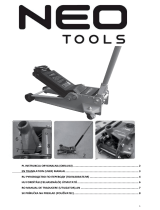 NEO TOOLS 11-732 Instrukcja obsługi
NEO TOOLS 11-732 Instrukcja obsługi
-
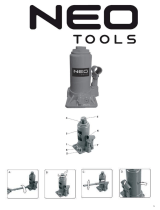 NEO TOOLS 11-700 Instrukcja obsługi
NEO TOOLS 11-700 Instrukcja obsługi
-
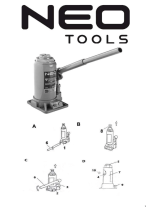 NEO TOOLS 10-452 Instrukcja obsługi
NEO TOOLS 10-452 Instrukcja obsługi
-
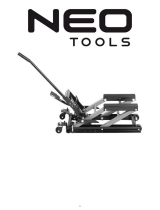 NEO TOOLS 10-596 Instrukcja obsługi
NEO TOOLS 10-596 Instrukcja obsługi
-
 NEO TOOLS 81-617-S Instrukcja obsługi
NEO TOOLS 81-617-S Instrukcja obsługi
-
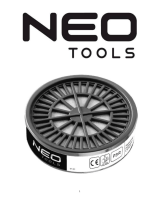 NEO TOOLS 97-361 Instrukcja obsługi
NEO TOOLS 97-361 Instrukcja obsługi
-
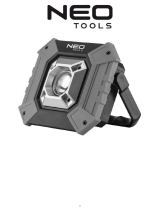 NEO TOOLS 99-038 Instrukcja obsługi
NEO TOOLS 99-038 Instrukcja obsługi
-
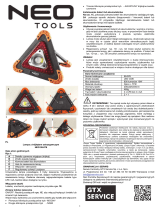 NEO TOOLS 99-076 Instrukcja obsługi
NEO TOOLS 99-076 Instrukcja obsługi
-
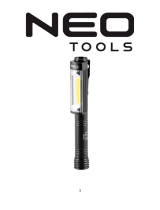 NEO TOOLS 99-045 Instrukcja obsługi
NEO TOOLS 99-045 Instrukcja obsługi
-
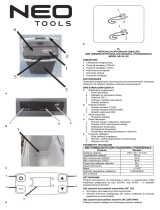 NEO TOOLS 63-142 Instrukcja obsługi
NEO TOOLS 63-142 Instrukcja obsługi
Inne dokumenty
-
Topex 94W120 Instrukcja obsługi
-
Stanley STMT81251-1 Instrukcja obsługi
-
Facom DL.200SECUA Instrukcja obsługi
-
USAG 2550 B Instrukcja obsługi
-
Facom DL.32A Instrukcja obsługi
-
Facom DL.PL10A Instrukcja obsługi
-
Facom DL.200SECU Instrukcja obsługi
-
Facom DL.30BTA Instrukcja obsługi
-
Facom DL.15AL Instrukcja obsługi
-
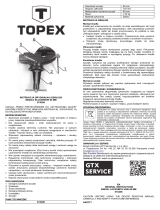 top tools 07A206 Instrukcja obsługi
top tools 07A206 Instrukcja obsługi























